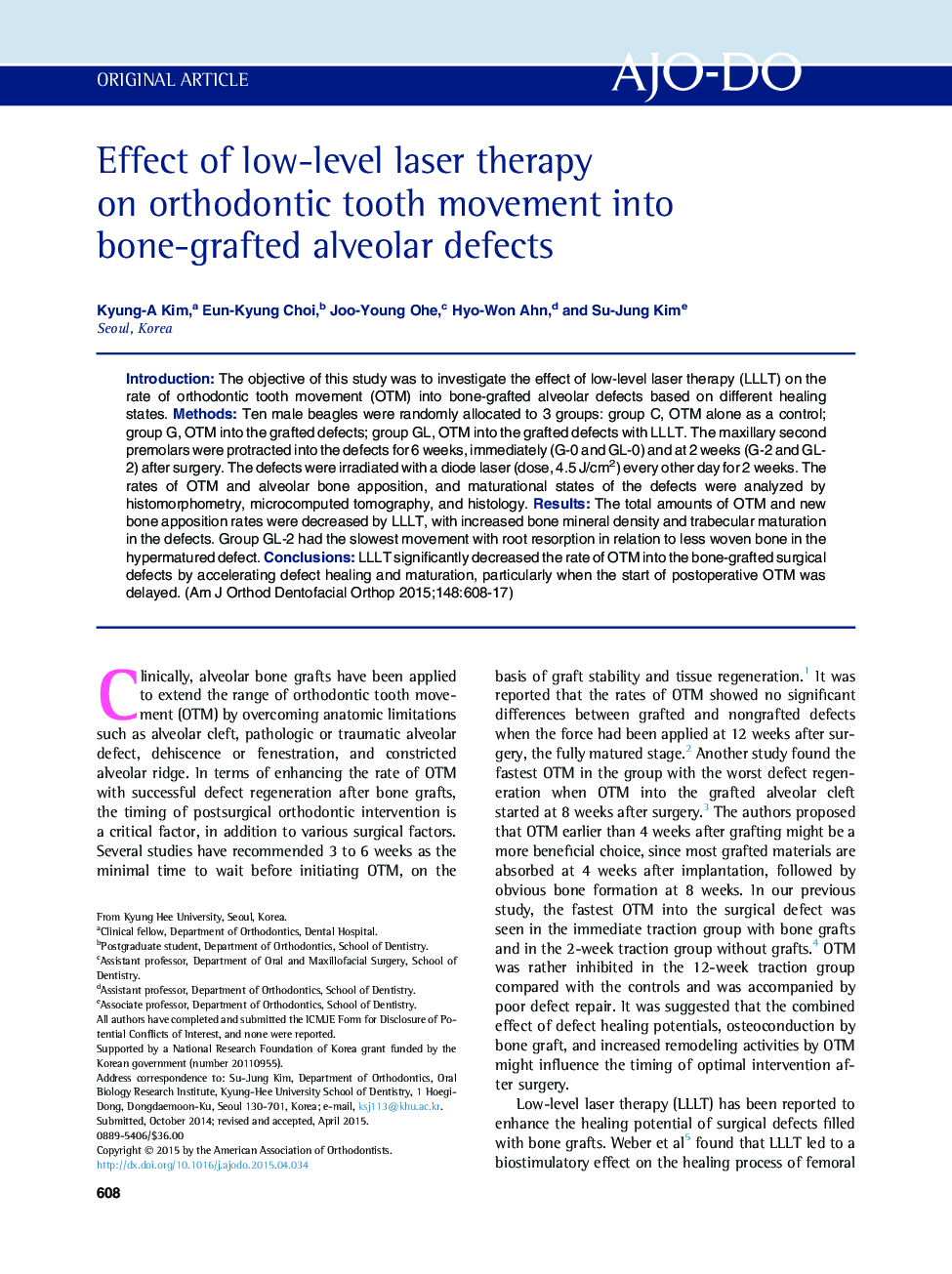| Article ID | Journal | Published Year | Pages | File Type |
|---|---|---|---|---|
| 3115866 | American Journal of Orthodontics and Dentofacial Orthopedics | 2015 | 10 Pages |
•We studied the effect of low-level laser therapy (LLLT) on orthodontic tooth movement.•Tooth movement and new bone apposition rate decreased after LLLT.•Bone mineral density and trabecular maturation in the defects increased after LLLT.•LLLT accelerated defect healing and maturation.
IntroductionThe objective of this study was to investigate the effect of low-level laser therapy (LLLT) on the rate of orthodontic tooth movement (OTM) into bone-grafted alveolar defects based on different healing states.MethodsTen male beagles were randomly allocated to 3 groups: group C, OTM alone as a control; group G, OTM into the grafted defects; group GL, OTM into the grafted defects with LLLT. The maxillary second premolars were protracted into the defects for 6 weeks, immediately (G-0 and GL-0) and at 2 weeks (G-2 and GL-2) after surgery. The defects were irradiated with a diode laser (dose, 4.5 J/cm2) every other day for 2 weeks. The rates of OTM and alveolar bone apposition, and maturational states of the defects were analyzed by histomorphometry, microcomputed tomography, and histology.ResultsThe total amounts of OTM and new bone apposition rates were decreased by LLLT, with increased bone mineral density and trabecular maturation in the defects. Group GL-2 had the slowest movement with root resorption in relation to less woven bone in the hypermatured defect.ConclusionsLLLT significantly decreased the rate of OTM into the bone-grafted surgical defects by accelerating defect healing and maturation, particularly when the start of postoperative OTM was delayed.
